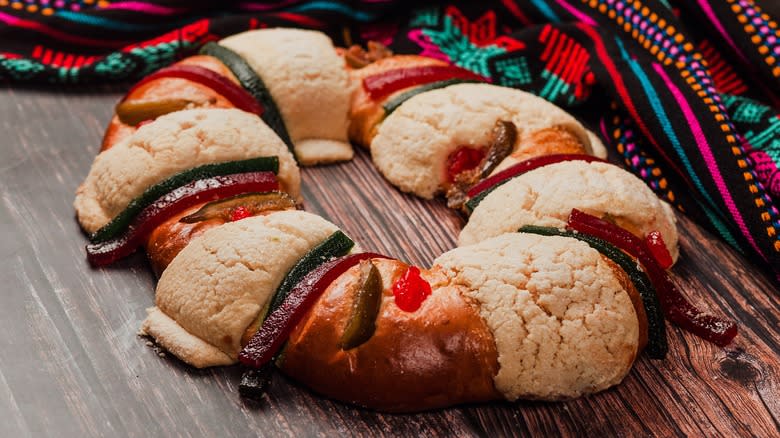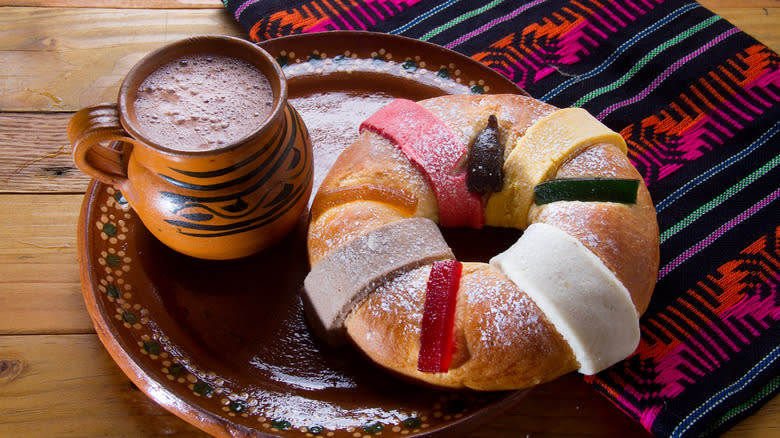Rosca De Reyes Is The Colorful Mexican Bread Served On Three Kings Day

Mexican culture is among the most vibrant and celebratory, representing a blending of Old World and New World cultures and belief systems. While Mexican cuisine has made use of plenty of unique and beloved native Mexican crops, Spaniards brought their own armory of culinary traditions, which have been colorfully adapted and co-opted into Mexico's blended culture. Rosca de Reyes is a colorful Mexican bread born of this fusion.
Known as "Kings Cake" or "Kings Wreath" in English, the Rosca de Reyes is an oblong, donut-shaped sweet bread topped with strips of colorful candied fruit leather with a plastic figurine of Baby Jesus hidden inside. Similar to the famous New Orleans Mardi Gras King Cake, the Rosca de Reyes commemorates the Catholic holiday known as the Epiphany or Baptism of Jesus that takes place on January 6th. Unlike King Cake, Rosca de Reyes is consumed only on January 6th and brings with it a unique set of Mexican traditions.
While Santa brings gifts on Christmas morning, Mexican children receive their gifts from los reyes magos, the three kings who brought gifts to baby Jesus to celebrate his baptism. The colorful quince, maraschino cherry, and candied fig toppings that line the Rosca de Reyes represent the three kings' gifts. After the children open their presents, Mexican families gather around to cut out their personal slices of bread. Whoever gets the slice with the figurine of Baby Jesus has to buy or make tamales the following month for Candelaria Day.
Read more: 30 Types Of Cake, Explained
Historical And Cultural Connections Between Mexico And Spain

The Spanish conquest brought Christianity as well as Old World ingredients and recipes to Mexico. Both the recipe for Rosca de Reyes and the celebration of Dia de Reyes in Mexico are the direct result of colonialism. Spanish conquistadors likewise drew culinary inspiration from Mexico, importing chocolate and transforming it into its numerous sweet forms. Hot chocolate is one such Spanish rendition of this Mexican native crop that has become a global favorite as well as a key component in Spanish and Mexican Dia de Reyes celebrations.
Mexicans typically eat their Rosca de Reyes accompanied by a milky mug of hot chocolate, similar to the way they enjoy their churros, which also happen to be of Spanish origin. Rosca de Reyes bread rings are sold in pretty much every grocery store and bakery around Mexico starting weeks before Three Kings Day. Artisanal bakeries and restaurants will even offer Rosca de Reyes stuffed with custard. You'll find them in various sizes; the larger the Rosca de Reyes, the more Baby Jesus figurines it contains, spreading the responsibility for supplying the next month's tamales more equitably.
Read the original article on Tasting Table.

